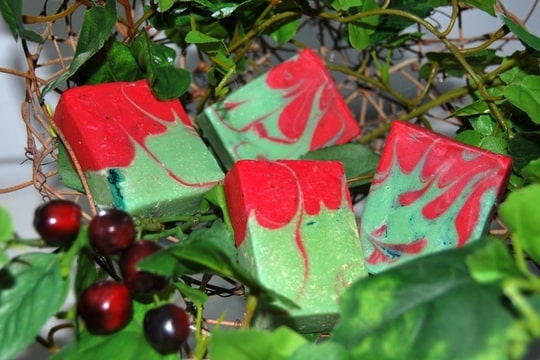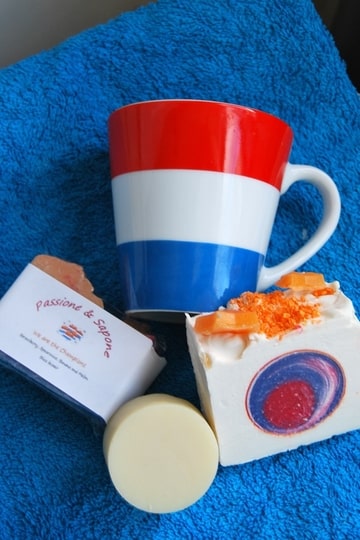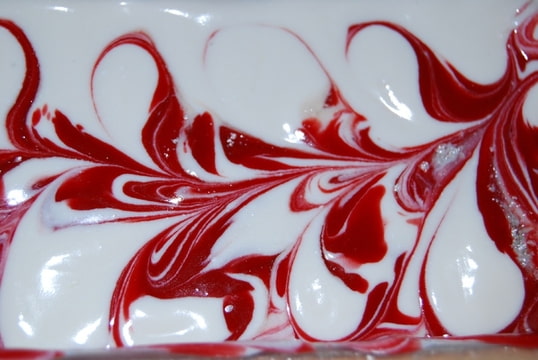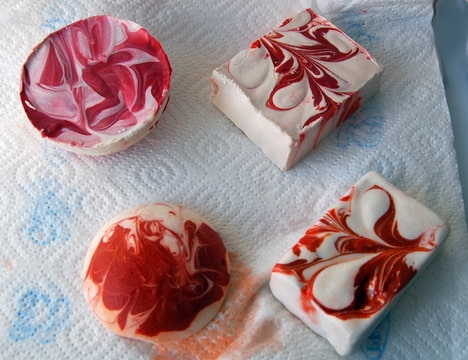Well, I have to say that not ALL reds bleed.... even if you use much.
CI 12490 (pigment red 5, Rouge Covanor W 3619) is the one you want.
Most of the reds are lakes (dye) - not pigments! They bleed.
(but I'm afraid you overdid it a little)
Some years ago I was in search of the "perfect" red (not the very bright, orangy one, but a nice darker red).
Luckily I made small batches, because it was a diaster. LOL
no bleeding:
and dito
looks good...
but ...
Orange is even more difficult; best is to mix the non bleeding red with a non bleeding yellow. Better even if you use a
neon pink (magenta); it wil give a brighter colour.
The orange pigment that's available is not skin safe: CI 21110 (at least according to the latest EU legislation).
Another option is Orange mica.























































